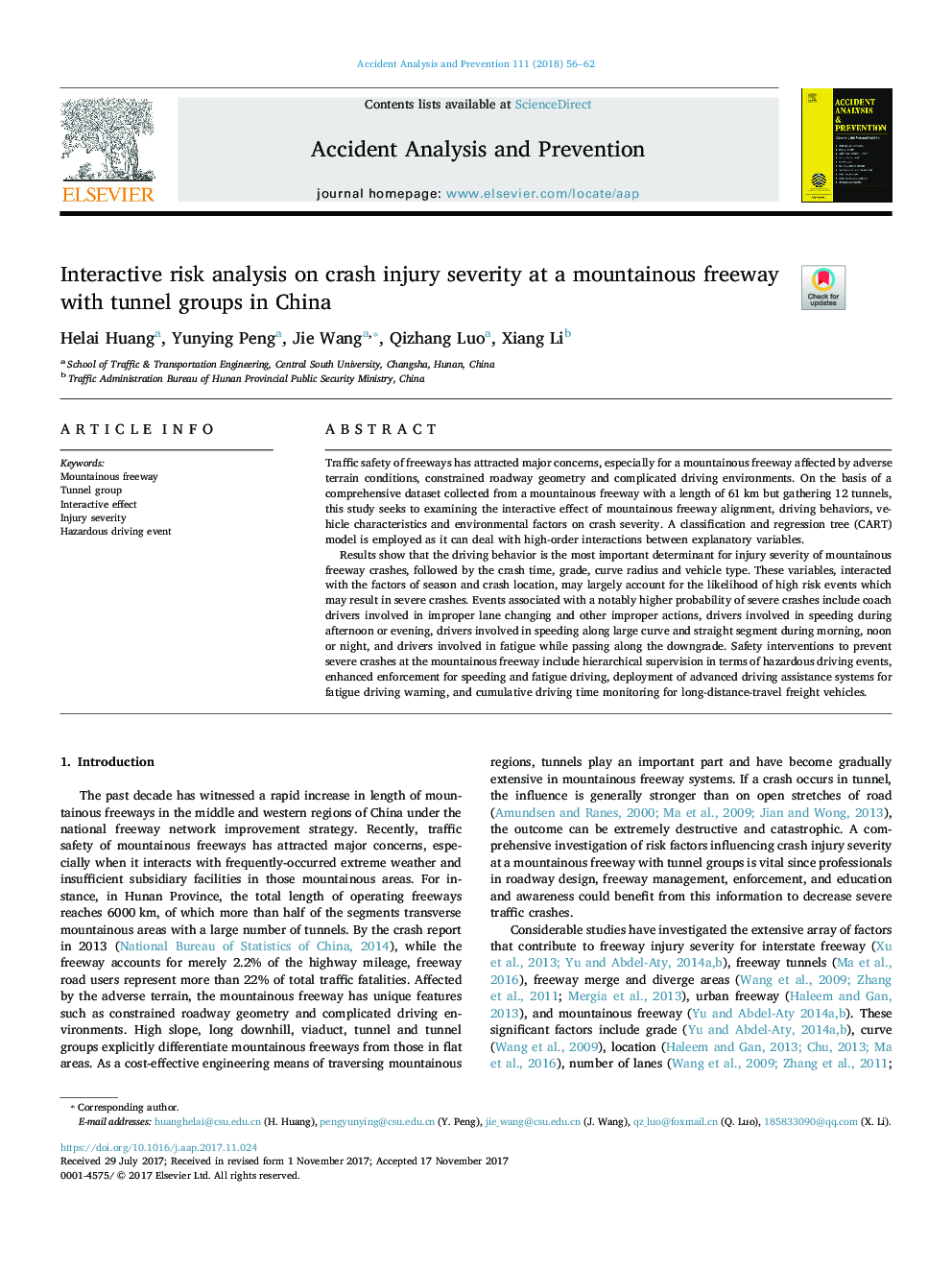| Article ID | Journal | Published Year | Pages | File Type |
|---|---|---|---|---|
| 6965247 | Accident Analysis & Prevention | 2018 | 7 Pages |
Abstract
Results show that the driving behavior is the most important determinant for injury severity of mountainous freeway crashes, followed by the crash time, grade, curve radius and vehicle type. These variables, interacted with the factors of season and crash location, may largely account for the likelihood of high risk events which may result in severe crashes. Events associated with a notably higher probability of severe crashes include coach drivers involved in improper lane changing and other improper actions, drivers involved in speeding during afternoon or evening, drivers involved in speeding along large curve and straight segment during morning, noon or night, and drivers involved in fatigue while passing along the downgrade. Safety interventions to prevent severe crashes at the mountainous freeway include hierarchical supervision in terms of hazardous driving events, enhanced enforcement for speeding and fatigue driving, deployment of advanced driving assistance systems for fatigue driving warning, and cumulative driving time monitoring for long-distance-travel freight vehicles.
Keywords
Related Topics
Physical Sciences and Engineering
Chemical Engineering
Chemical Health and Safety
Authors
Helai Huang, Yunying Peng, Jie Wang, Qizhang Luo, Xiang Li,
